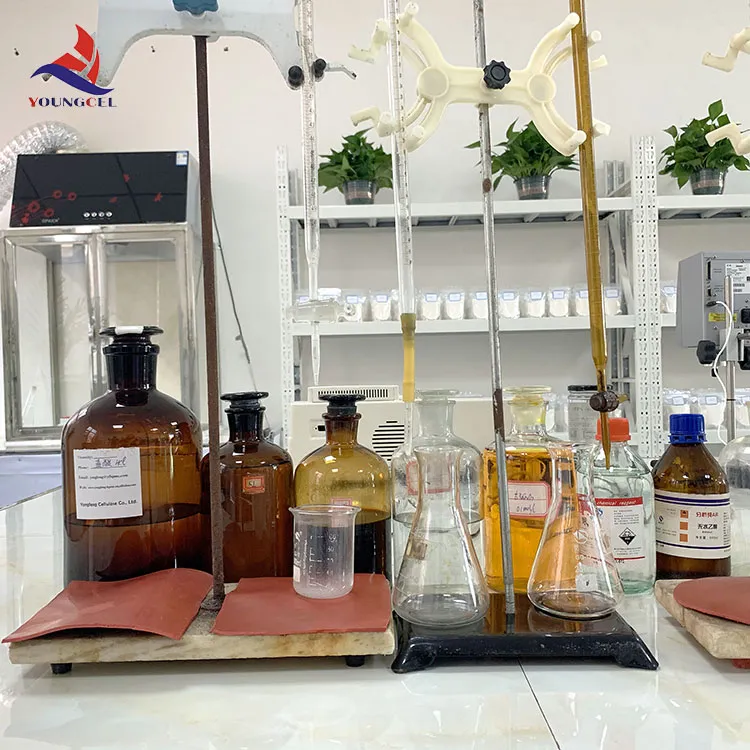Building Coating Adhesive HPMC An Essential Component in Modern Construction
Hydroxypropyl Methylcellulose (HPMC) has emerged as a crucial ingredient in the formulation of building coatings and adhesives. This versatile cellulose ether, derived from natural cellulose, has significant applications in the construction industry due to its unique properties, which enhance the performance and quality of various construction materials.
Properties of HPMC
HPMC stands out for its remarkable characteristics. As a water-soluble polymer, HPMC can impart various functionalities to building coatings and adhesives. One of its primary traits is its ability to retain water, crucial for ensuring that the adhesive remains workable over extended periods. This property is particularly beneficial during the construction process, allowing ample time for adjustments without compromising the integrity of the adhesive bond.
Additionally, HPMC enhances the viscosity of coating formulations, allowing for improved application and uniform thickness. This enables a smoother finish and better coverage, reducing the number of coats required. Moreover, HPMC exhibits excellent shear-thinning behavior, meaning that it becomes less viscous under mechanical stress, facilitating easy application while maintaining a stable and thick consistency at rest.
Benefits of Using HPMC in Coatings and Adhesives
The incorporation of HPMC in building coating adhesives offers several advantages. Firstly, it improves adhesion strength, which is essential for ensuring that coatings remain attached to surfaces over time, especially under varying environmental conditions. A strong bond reduces the likelihood of peeling, blistering, or other failures that can occur in lower-quality products.
Secondly, HPMC contributes to the flexibility and elasticity of adhesives. This flexibility is vital in construction, where materials may expand and contract due to temperature fluctuations and moisture variation. An adhesive that can accommodate these changes without breaking maintains the integrity of the overall construction.
building coating adhesive hpmc

Furthermore, HPMC helps to improve the workability of construction materials. By enhancing the flow characteristics of adhesives and coatings, it allows for better leveling and reduces the appearance of defects, ensuring a visually appealing finish. This is particularly important in projects where aesthetic quality is a priority, such as in residential and commercial buildings.
Sustainability and Eco-Friendliness
With growing concerns about environmental sustainability, HPMC offers a more eco-friendly alternative to traditional construction materials. As a cellulose derivative, it is biodegradable and derived from renewable resources. Using HPMC in building coatings and adhesives aligns with the industry's movement towards greener construction practices, making it a favorable choice for environmentally conscious projects.
Applications in the Construction Industry
HPMC is utilized in a wide range of applications within the construction industry. It is commonly found in tile adhesives, joint compounds, and plaster mixes, among other products. The ability to modify the properties of HPMC allows manufacturers to tailor their formulations for specific needs, optimizing performance in various applications.
Moreover, as the construction industry continues to evolve and seek innovative solutions, HPMC is likely to play an even greater role in the development of high-performance coatings and adhesives. Its versatility and effectiveness make it an essential component for manufacturers looking to meet stringent regulatory standards and customer expectations.
Conclusion
In summary, Hydroxypropyl Methylcellulose is a vital ingredient in the realm of building coatings and adhesives, enhancing performance and sustainability. Its unique properties contribute to improved adhesion, workability, and flexibility, making it highly beneficial in construction applications. As the demand for high-quality, eco-friendly construction solutions grows, HPMC will continue to be an indispensable component, driving innovation in the industry.
-
Premium Detergent Grade HPMC Hydroxypropyl Methylcellulose: Superior Thickening & StabilityNewsAug.31,2025
-
HEC 100000 Hydroxyethylcellulose for Paint | Superior ThickeningNewsAug.30,2025
-
Wall Putty Rdp Powder Packaging DesignNewsAug.29,2025
-
Introduction to Hpmc Hydroxypropyl Methyl CellulosNewsAug.29,2025
-
Hpmc Industri Grade IntegrationNewsAug.29,2025
-
How to Choose the Right Construction AdhesiveNewsAug.29,2025




